How to Do Music Study
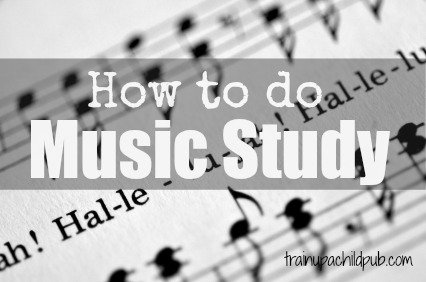
Charlotte Mason Music Study is not difficult — even if you would think of yourself as non-musical. As a busy homeschool mom, you may not think you don’t have time, but you do. It doesn’t have to be a big deal. You can listen to music during chores, lunch, or while cooking dinner together. Like so many things, it’s not how much time you spend on music study; it’s the frequency of the time you spend. The minutes add up! If you’ve never done it, here’s how to do music study.
Music.
What an incredible power music (and music study) has to inspire us.
Although we don’t fully understand why this is so, music has been proven in numerous studies to increase the spatial-temporal abilities and intelligence of children.
Not only has this been documented by others, but we have also often experienced the effects of music ourselves – lifting our spirits when we are down, energizing us when we are weary, and bringing us closer to God in worship.
And I can give you a first-hand example. When my dad was about 11, he used his hard-earned money to take himself and his borrowed violin on a Kansas to Missouri bus ride for violin lessons. I don’t know how long he took lessons, but he ended up first-chair violin in his high school orchestra. My dad is now 90, and he has Alzheimer’s. But he can do more than what his brain looks like it should be able to do, according to his neurologist. I have to wonder — is that because of years of musical training and practice? Also, this includes many years of singing in the church choir.
Regardless, with such a proven and profound influence, shouldn’t music be a part of our children’s education if we want to bring our kids’ homeschool education to life?
Charlotte Mason thought so, too.
What we want (education to result in) is a common basis of thought, such a ground work as we get from having read the same books, grown familiar with the same pictures, the same musical compositions, the same interests; when we have such a fundamental basis, we shall be able to speak to each other whether in public speaking or common talk; we shall “all hear in our own tongue the wonderful works of God” because we have learned a common speech…
–Charlotte Mason, Vol. 6
Just as children…were given the greatest literature and art, so they should have the greatest music as well…
–Mrs. Howard Glover, quoted by Charlotte Mason, Vol. 6
In the past, one was not considered educated without an appreciation and ability to recognize the more common composers and pieces of music. You can give that same knowledge to your children. Many times it’s the “extras” like music and art, that really bring your home education to life for your children.
For any or all of the reasons above: music study should be part of our children’s education!
What Does Charlotte Mason Music Study Look Like?
You don’t have to buy a particular curriculum or make detailed plans to “teach” music to include music study in your home education. Thankfully, you don’t have to play an instrument or be trained musically to enjoy and listen to excellent music.
Similar to Picture Study, you can simply choose one composer for a term/unit/month/semester and play several pieces of one composer until that composer’s style is familiar and recognizable to your children. Additional ideas:
- You may read a book on the composer’s life.
- Spiritual Lives of the Great Composers is one book written from a Christian perspective that might be fun to read to your children before you listen to music.
- You may purposefully ‘sit and just listen’ to pieces of music, especially as you introduce your students to a newer composer, or you may…
- Make it a daily habit to listen to a particular piece of music for one week when you are accomplishing other tasks– when your kids are getting up in the morning, at mealtime, when doing chores, when children are getting ready for bed, etc.
- You may also incorporate Music and Composer Study into history, as we do with our curricula, studying each composer and listening to his* music as we learn about the time period in which he or she lived.
*And how about including women composers in your Music Study as well? This subject begs to be researched further – perhaps by your high school student!
How Do I Make Sure My Students Are Engaged with Music Study?
As with reading a book or Picture Study, we desire our students to actively ‘engage’ while listening to music. Especially if Music Study is new to your students, giving them a few pointers to help them listen may be helpful.
Consider the following questions and activities while listening to music:
- How does this music make you feel when you are listening? (Happy? Sad? Worried? Peaceful?)
- Is this music fast, slow, or in between? How would you describe it?
- Close your eyes and think of the ‘story’ this music suggests to you. (And can you tell me the story/draw the story/write the story?)
- Draw a picture of what the music “looks like.”
- For younger children to experience the music, invite them to dance to it! (Have you ever met a young child who disliked dancing? Me, either!)
Editor’s Note: there are affiliate links included in this post. Should you buy something with one of our affiliate links, we might make a small commission on your purchase at no extra cost to you. But many thanks for supporting us in this way!
Ideas for Further Study
- Can you hear any of the instruments that were played in this music?
- Do you hear any parts of this music that are repeated?
- Consider using resources to learn a little about the fundamentals of music theory.
- Have your students complete a lapbook about different musical instruments or their favorite composers.
- Provide instrument lessons for your students.
- Our favorite book about music is this one! It shows you the different instrument sections of an orchestra and even lets you hear how individual instruments sound!
Music and Composers per Historical Period
We have included the historical period of the music/composer if you are incorporating music/composer study into history as we do. A few resources we have enjoyed are also provided.
Middle Ages –
There were not many composers named during this era, but here are a few sources of period music:
Both the CD above and below feature Gregorian Chants. The first one is solely male voices, while the one below includes male and female voices.
Renaissance & Reformation –
This includes several of the works of Martin Luther, with his words interspersed.
Quiet and tranquil, this CD might especially be enjoyed by you!
Find music from these composers on YouTube, or buy a “Best of__” CD to listen to them:
Colonial – Revolution
Claudio Monteverdi
Johann Pachelbel
Georg Friedrich Handel – make sure to listen to The Messiah
Franz Joseph Haydn
Schubert
Ludwig v. Beethoven
Johann Sebastian Bach
Westward Expansion – Immigration
Franz Liszt
Wolfgang Amadeus Mozart
Richard Wagner
Frédéric Chopin
Claude Debussy
Modest Petrovich Mussorgsky
Pyotr Ilyich Tchaikovsky
Modern
Sergei Rachmaninov
Claude Debussy
Igor Stravinsky
George Gershwin
Aaron Copland
Ottorino Respighi
Do you do music study in your household? Do you think this post could help you get started?
![]()
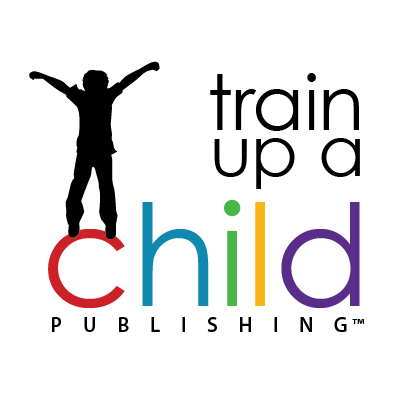
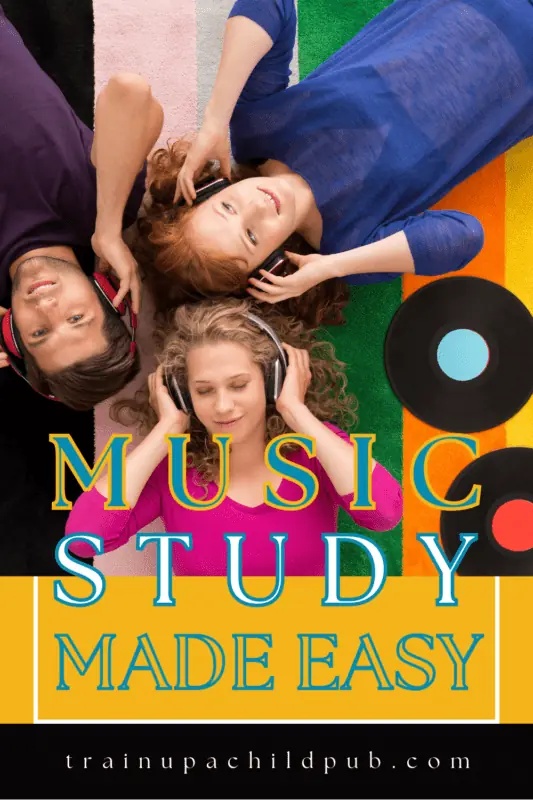





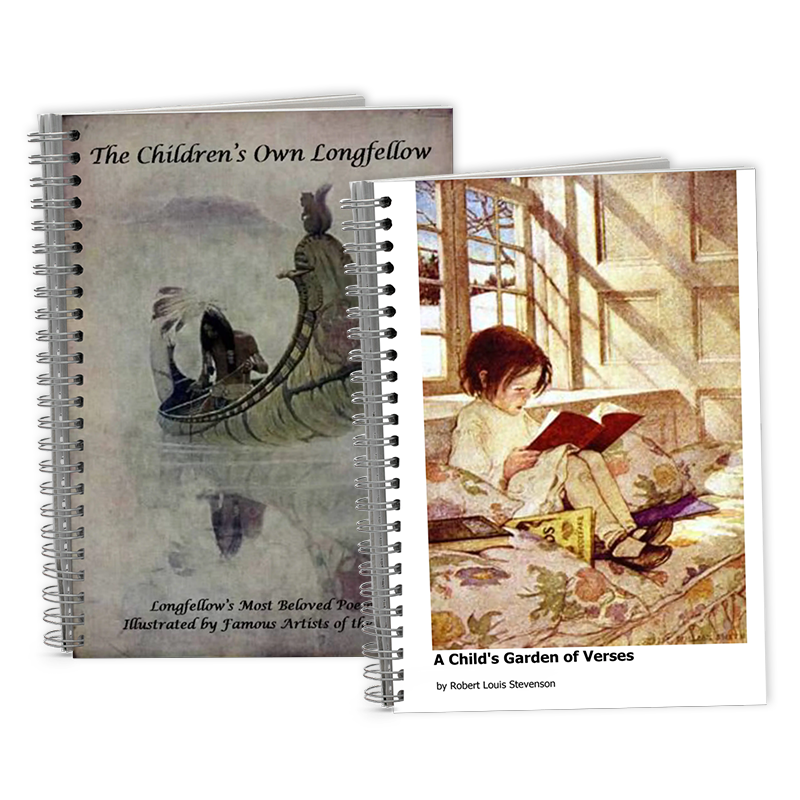
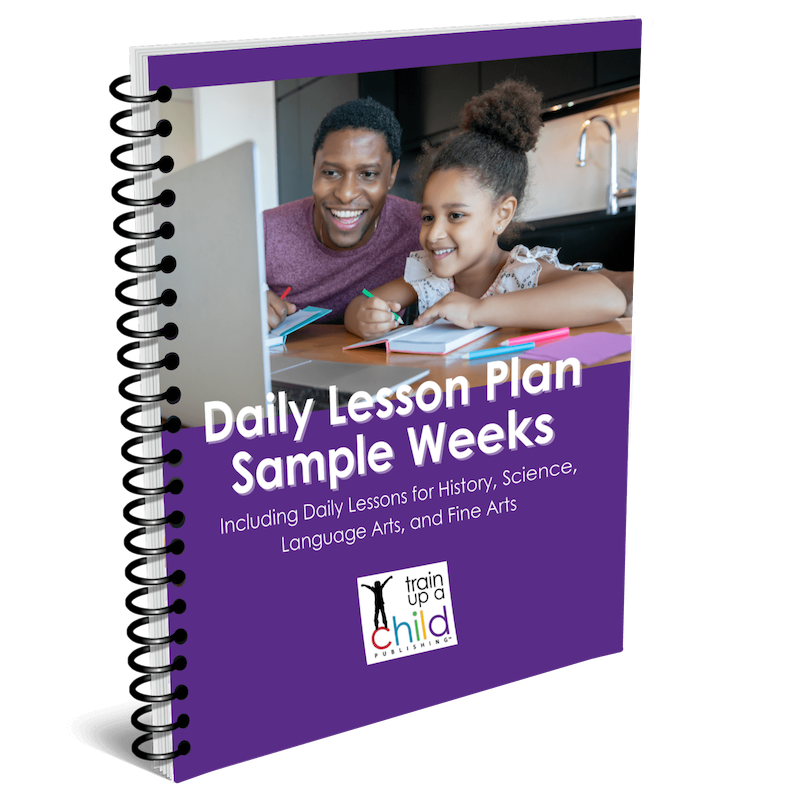
Nadene, Thank you for watching the video! It was so inspirational to me that I really hope people are taking the time to watch it. And it underscores the importance of music! Incidentally,I started the video sometime after the beginning to make it less time-consuming to watch, so you missed the part where the gentleman’s daughter was interviewed and she said he had always walked his girls to school and they sang and danced all the way. She likened it to Gene Kelly’s ‘Singin’ in the Rain.’ What a precious memory.
Yes – the Charlotte Mason approach allows for a much better understanding of history and people when studied in the context of their time periods than a more isolated, traditional methodology of teaching and learning.
Ellen, everything is easier when the kids are younger and more of a ‘captive’ audience. 🙂 Sometimes it’s easiest to work the listening part in over meals or chore times. Interestingly, my son took a music appreciation class at college and they had to analyze music, write about it and learn to recognize MANY pieces of music. He aced it.
What a lovely introductory video – it demonstrates the simple yet powerful connection to music. I’m often surprised how my children relate their music appreciation lessons to movies! They have so many soundtracks built in their memories. With a CM approach, I feel that I am filling the history and authentic details to the composer and his life and era.
Dana, I very much enjoyed your post. This is an area in which I’ve been slack in the past year. When the children were younger, I was diligent with music/composer study. Now that they are older, they complain (loudly), and I let it slide. :-/ Thanks for the encouragement. I also appreciate the listing of composers in historical era format. Blessings!
As a homeschooler and musician, I loved your post! Great ideas here — I’m sharing liberally. 🙂
Thanks so much, Mary! So glad to hear you loved it and will be sharing my post! 🙂 Feeling so much responsibility to thoroughly educate our children in the academic subjects, many of us homeschooling moms tend to leave out the music and art studies, which are important as well! I think that is what first appealed to me about using a Charlotte Mason methodology in our homeschooling. Thanks for stopping by!